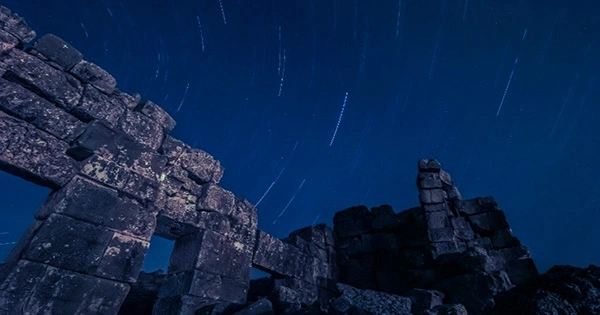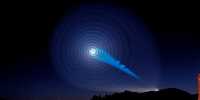April is currently a fantastic month for night sky enthusiasts. A geomagnetic storm caused lower-latitude and more vivid Northern Lights, and the Pink Moon, the first Full Moon of spring, will occur tomorrow. But there’s more to come, including a planetary alignment and the Lyrid meteor shower, which will be visible for the first time since January. The Lyrids are not a very stunning meteor shower, but they are constant year after year. According to the International Meteor Organization, this meteor shower will flash across the sky from April 15 to 29, peaking on April 22. They’re named Lyrids because they appear to come from the constellation Lyra, whose brightest star, Vega, is easily seen.
The three days leading up to the peak are the best for seeing the shower, while the full Moon tomorrow means that in a week, it will still be bright enough to make observations difficult unless you stay up late. In ideal conditions, roughly 18 meteors per hour should be visible across the sky. Comet C/1861 G1 Thatcher has left a path of debris in the inner Solar System as it orbits the Sun, and these meteors are part of that trail. Every 415 years or so, this long-period comet completes its orbit around our star.
It was originally seen in 1861, thus the next time it will be seen will be in 2276, making it unlikely that any of us will be around to see it (but you never know). The gravitational forces of the planets have a shorter-term effect on the debris left behind, despite their great duration. The wake of debris comes straight into Earth’s orbit every 60 years or so, amplifying the event for one season. Observers counted roughly 90 shooting stars per hour at its peak the last time it appeared in 1982. We’ll have to wait another 20 years for the next one.
This sporadic outburst has helped the Lyrids become so well-known throughout history. They are one of the oldest known meteor showers. One of the most remarkable showers in history was the Lyrids peak in 1803, when a writer in Richmond, Virginia reported up to 700 meters per hour falling down. A nearly 2,000-year-old event was reported in the Zuo Zhuan, an ancient Chinese narrative history, as the “stars fell like rain” in 687 BCE during a Lyrids meteor shower. This meteor shower has even been described in Australian Indigenous Astronomy, which dates back millennia.















